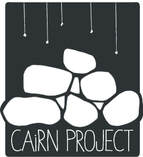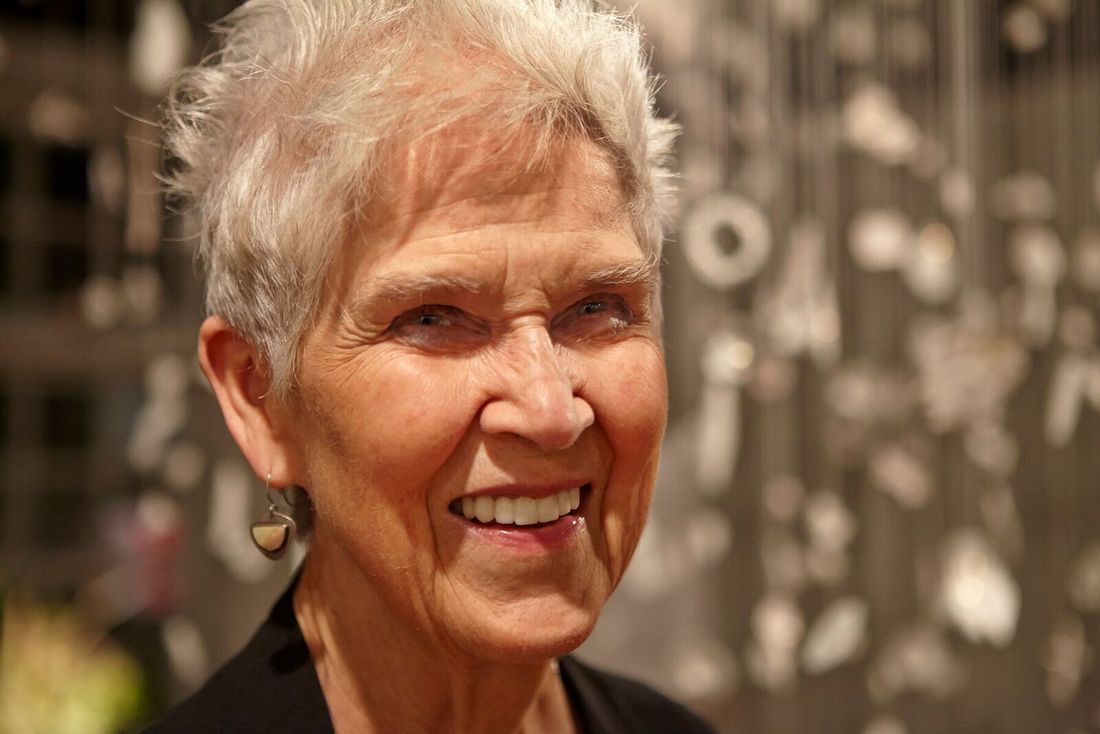Contributed by Marsha BakerI am pleased to introduce Marsha Baker, OTR/L, M.Ed., as our first guest blogger. When she first took my clay class, I was unaware of her expertise. But when she volunteered to help develop the clay workshops for the Cairn Project, I discovered what a valuable resource she would be. Marsha is a pediatric occupational therapist and infant mental health specialist. She earned her master’s degree in child development and certification in infant mental health from Erikson. Most of her career has been working with families of young children with a focus on nourishing the parent/child relationship. At the Erikson Institute, Marsha saw her work with families through a trauma lens. She recognized that the development of young children is affected by the experience of trauma around them. I became involved in the Cairn Project when it was a gleam in Corinne Peterson’s eyes. More accurately, “The Project,” as we called it, found me at a time when I had just retired and was looking for a new chapter in my story…  Clay and Occupational Therapy Ceramics was required for enrolling in the school of Occupational Therapy at the University of Illinois in the 1970’s. I enrolled in ceramics and immediately fell in love with the feeling of the clay turning on the wheel. The feeling stuck with me until I finished school. The origins of Occupational Therapy hark back to 18th century Europe where Drs. Philippe Pinel and Johann Reil radically reformed hospitals by using work and leisure activities instead of barbaric chains and restraints to treat patients with “mental” disorders. This approach was part of the “moral treatment” era in Europe’s age of enlightenment. Later in the 20th century, one observer of this approach at Bellevue Hospital stated, “In the psychopathic ward the hand work with the bright colors and pleasant surroundings of the shop have been found to clear bewildered minds. Men as well as women have been found to work enthusiastically at scarf weaving, making rag rugs, toy designing, every sort of pleasurable hand work.” This nostalgic musing seems far removed from the current state of mental health treatment. However, the idea that creative pursuits and working with one’s hands in a supportive environment can be healing is a cairn(1) on my journey to “The Project.” Earning an Infant Mental Health Certificate I began working with families of young children immediately after graduating as an occupational therapist. Although I loved being helpful and providing “parent education and support,” something was missing. Around 2001, Erikson Institute offered a new certificate program in Infant Mental Health. A paper entitled Ghosts in the Nursery, by Selma Freiberg, was the core of this program for me. The paper is about work with caregivers of babies who are at high risk of bad developmental outcomes or being removed from their families for their safety. The paper compellingly and painfully shows how unresolved traumas from mothers’ pasts were interfering with their ability to parent their own babies. It also discusses how working with the mother’s unconscious pain, through empathic understanding, could reduce the risk of the mother’s history being re-enacted with her infant. This was my introduction to “trauma informed” work. Everybody has a story. “Difficulties arise not because we have a story, perhaps a very sad or painful story, but because we become attached to our stories and make them an essential part of our very selves.” (Rachel Freed). This is a topic for the next blog I will write.  Working for the Fussy Baby Network in Pilsen/Little Village After finishing the Infant Mental Health program, I worked for Erikson Institute’s Fussy Baby Network program for more than ten years. For me the most meaningful work was helping to design and implement a weekly drop-in group for families in the Pilsen/Little Village communities in partnership with folks from a local church. We called the group “Pequenos Exploradores,” (Little Explorers). The evolution of this group was the basis for my contribution to the Cairn Project.  The vast majority of families were community members without documents. They were raising families and missing families. The weekly drop-in group became a safe place for parents and grandparents to bring their children to play. Also it became a place to share feelings and be heard, and a place to come for support and resources. Parents and grandparents shared stories of domestic violence, fear, economic struggles, families left behind, unplanned pregnancies, community connections, and of bravery and hope for the future. The church room that housed the group was warm and welcoming. The local grocery store provided healthy snacks every week. A sister church provided accompanying services for families and volunteers. A local restaurant provided food for celebrations. We received a grant to buy new toys and equipment. Every detail was respectfully planned and discussed. Over the years the group was in existence, many stories were heard and some were changed. One morning when I was setting up for the group, I learned that my father had died. I stood in the middle of the church room crying in the arms of one of the mothers who had arrived early. I will never forget the unexpected and unbound feeling of comfort. A New Chapter Begins… I had taken Corinne’s class, Dreams, Myths and Stories in Clay, several times, and as I was leaving my work with Fussy Baby Network, I asked Corinne a question. Did she know of a community clay project I could volunteer for; murals perhaps? She asked me if I was interested in helping with this new project she was developing. And I said yes. (1) Cairns are used to mark important or sacred places and as markers along a path. Coming Posts
http://www.thecairnproject.com/
https://www.facebook.com/cairnproject/
0 Comments
Leave a Reply. |
Author
|


 RSS Feed
RSS Feed